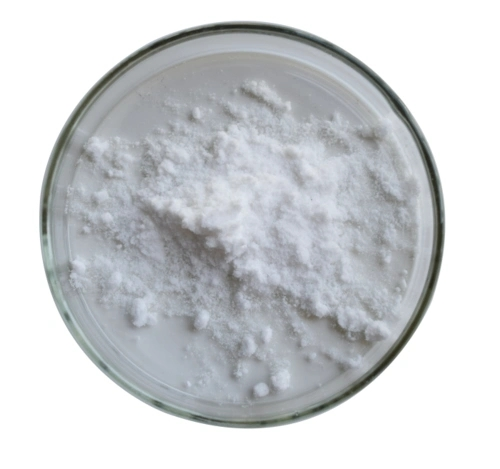What is the difference between deoxyarbutin and alpha arbutin?
In the realm of skincare, arbutin has emerged as a powerful ingredient for addressing hyperpigmentation and achieving a brighter, more even complexion. However, not all arbutin derivatives are created equal. Two popular forms, deoxyarbutin powder and alpha arbutin, have garnered significant attention for their skin-brightening properties. This article delves into the key differences between these two compounds, exploring their effectiveness, safety profiles, and potential benefits for your skincare routine.
Deoxyarbutin vs Alpha Arbutin: Key Differences Explained
Deoxyarbutin and alpha arbutin are both derivatives of hydroquinone, a well-known skin-lightening agent. However, they differ in their chemical structure and potency, which impacts their effectiveness and safety profiles.
Alpha arbutin is a naturally occurring compound found in various plants, including bearberry and blueberry leaves. It's a glycosylated form of hydroquinone, meaning it has a sugar molecule attached to it. This structure allows for a slower, more controlled release of the active compound into the skin, resulting in a gentler brightening effect.
On the other hand, deoxyarbutin is a synthetic derivative of arbutin. It's created by removing the hydroxyl groups from the glucose side-chain of beta-arbutin, another form of arbutin. This modification results in a more potent compound with enhanced skin-lightening capabilities.
The primary differences between deoxyarbutin powder and alpha arbutin include:
- Potency: Deoxyarbutin is significantly more potent than alpha arbutin. Some studies suggest it can be up to 350 times more effective than traditional arbutin in inhibiting tyrosinase, the enzyme responsible for melanin production.
- Speed of Action: Due to its higher potency, deoxyarbutin typically produces faster results compared to alpha arbutin.
- Stability: Deoxyarbutin is more stable in formulations, particularly in oil-based products, which can lead to a longer shelf life and potentially better efficacy over time.
- Skin Penetration: Deoxyarbutin has better skin penetration capabilities, allowing it to reach deeper layers of the skin where melanin production occurs.
- Safety Profile: While both compounds are generally considered safer alternatives to hydroquinone, alpha arbutin has a longer history of use and is often regarded as gentler on the skin.
How Deoxyarbutin Powder Enhances Skin Brightening?
Deoxyarbutin powder has garnered attention in the skincare industry for its remarkable skin-brightening properties. Its enhanced effectiveness stems from its unique mechanism of action and chemical structure.
Here's how deoxyarbutin powder works to enhance skin brightening:
- Potent Tyrosinase Inhibition: Deoxyarbutin is an exceptionally potent inhibitor of tyrosinase, the key enzyme involved in melanin production. By effectively suppressing this enzyme's activity, deoxyarbutin can significantly reduce melanin synthesis, leading to a brighter, more even skin tone.
- Targeted Action: Unlike some other skin-lightening agents, deoxyarbutin specifically targets areas of hyperpigmentation without affecting the surrounding skin. This targeted approach helps to even out skin tone more effectively.
- Improved Skin Penetration: The chemical structure of deoxyarbutin allows for better skin penetration compared to other forms of arbutin. This enhanced penetration enables the active compound to reach the deeper layers of the skin where melanin production occurs, resulting in more profound and lasting brightening effects.
- Antioxidant Properties: Beyond its skin-lightening capabilities, deoxyarbutin also exhibits antioxidant properties. This dual action not only helps to brighten the skin but also protects it from free radical damage, which can contribute to premature aging and further pigmentation issues.
- Synergistic Effects: Deoxyarbutin can work synergistically with other skin-brightening ingredients, potentially enhancing their effects. When combined with ingredients like vitamin C or niacinamide, it can provide more comprehensive skin-brightening and anti-aging benefits.
The enhanced efficacy of deoxyarbutin powder makes it a valuable ingredient in various skincare formulations, including serums, creams, and targeted treatments for hyperpigmentation. Its ability to provide rapid and noticeable results has made it increasingly popular among those seeking effective solutions for uneven skin tone and dark spots.
Is Deoxyarbutin Powder Safer Than Alpha Arbutin?
The safety profile of skincare ingredients is a crucial consideration for both consumers and formulators. When comparing deoxyarbutin powder to alpha arbutin, several factors come into play:
- Hydroquinone Release: One of the primary concerns with deoxyarbutin is its potential to release hydroquinone, a compound that has been associated with safety concerns in high concentrations or with prolonged use. The Scientific Committee on Consumer Safety (SCCS) has expressed reservations about the use of deoxyarbutin in face creams at concentrations up to 3% due to this hydroquinone release.
- Skin Sensitivity: Alpha arbutin is generally considered gentler on the skin due to its slower, more controlled release mechanism. This makes it potentially more suitable for those with sensitive skin or those prone to irritation.
- Long-term Use: Alpha arbutin has a longer history of use in skincare products, providing more data on its long-term safety profile. The safety of deoxyarbutin for extended use is still under investigation.
- Concentration Levels: The higher potency of deoxyarbutin means it can be effective at lower concentrations compared to alpha arbutin. This could potentially reduce the risk of skin irritation or other adverse effects associated with higher concentration levels.
- Regulatory Status: Alpha arbutin is more widely approved for use in skincare products across different regions. Regulations regarding deoxyarbutin may vary, and it's essential to check local guidelines for its use in cosmetic formulations.
Conclusion
In the realm of skin-brightening ingredients, both deoxyarbutin and alpha arbutin offer compelling benefits. Deoxyarbutin stands out for its potency and rapid results, making it an attractive option for those seeking dramatic improvements in skin tone. However, its safety profile, particularly concerning long-term use, warrants careful consideration.
Alpha arbutin, while less potent, offers a gentler approach to skin brightening with a well-established safety record. It remains a popular choice for those with sensitive skin or those preferring a more gradual improvement in skin tone.
For more information about deoxyarbutin powder and other plant extracts for skincare, please contact us at emily@jiubaiyuanbiotech.com. Our team of experts can provide personalized guidance on selecting the most suitable ingredients for your skincare formulations.

References
1. Boo, Y. C. (2019). Arbutin as a skin depigmenting agent with antimelanogenic and antioxidant properties. Antioxidants, 8(9), 355.
2. Hori, I., Nihei, K., & Kubo, I. (2004). Structural criteria for depigmenting mechanism of arbutin. Phytotherapy Research, 18(6), 475-479.
3. Lajis, A. F. B., Hamid, M., & Ariff, A. B. (2012). Depigmenting effect of Kojic acid esters in hyperpigmented B16F1 melanoma cells. Journal of Biomedicine and Biotechnology, 2012.
4. Sarkar, R., Arora, P., & Garg, K. V. (2013). Cosmeceuticals for hyperpigmentation: What is available? Journal of Cutaneous and Aesthetic Surgery, 6(1), 4.
5. Zhu, W., & Gao, J. (2008). The use of botanical extracts as topical skin-lightening agents for the improvement of skin pigmentation disorders. Journal of Investigative Dermatology Symposium Proceedings, 13(1), 20-24.
